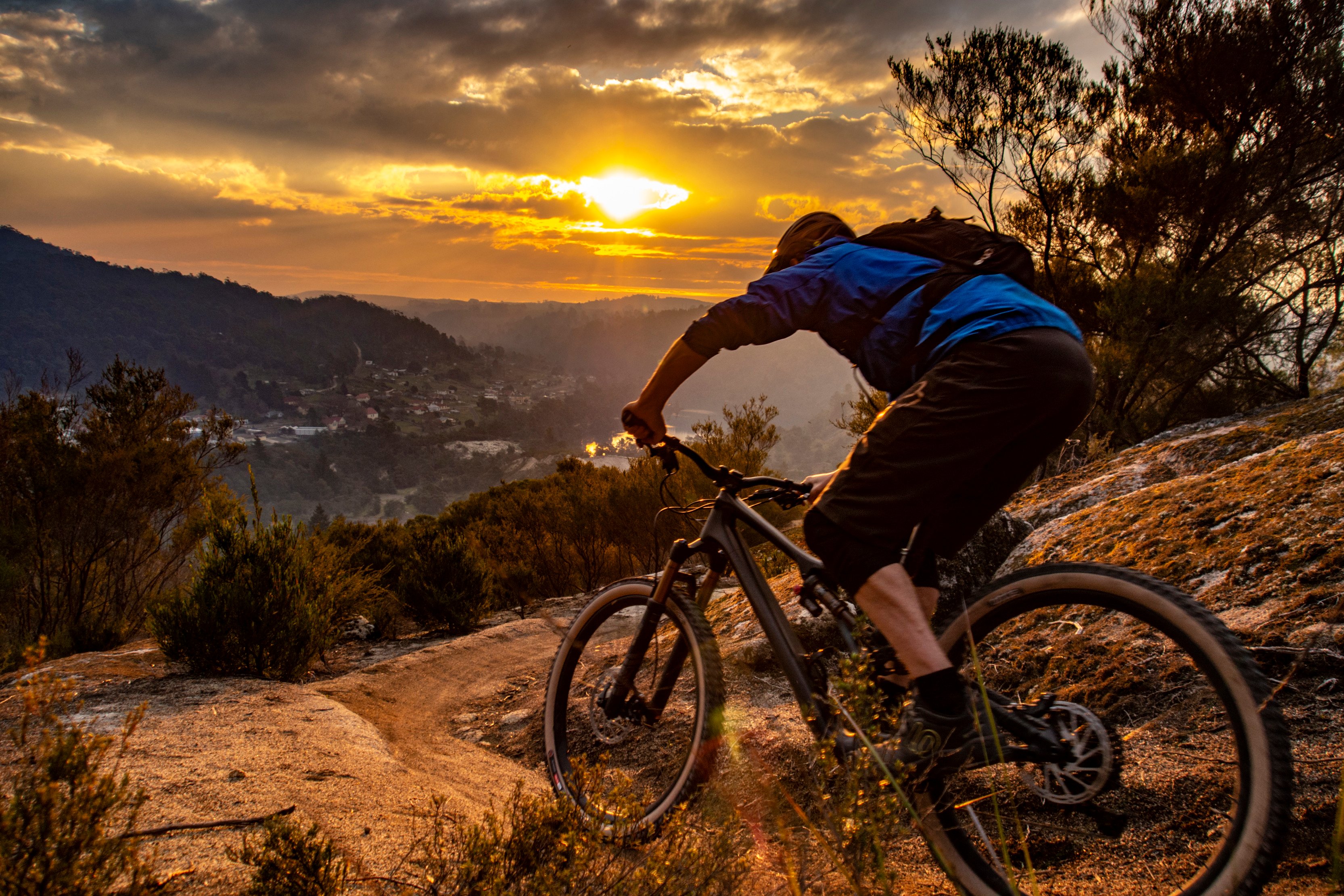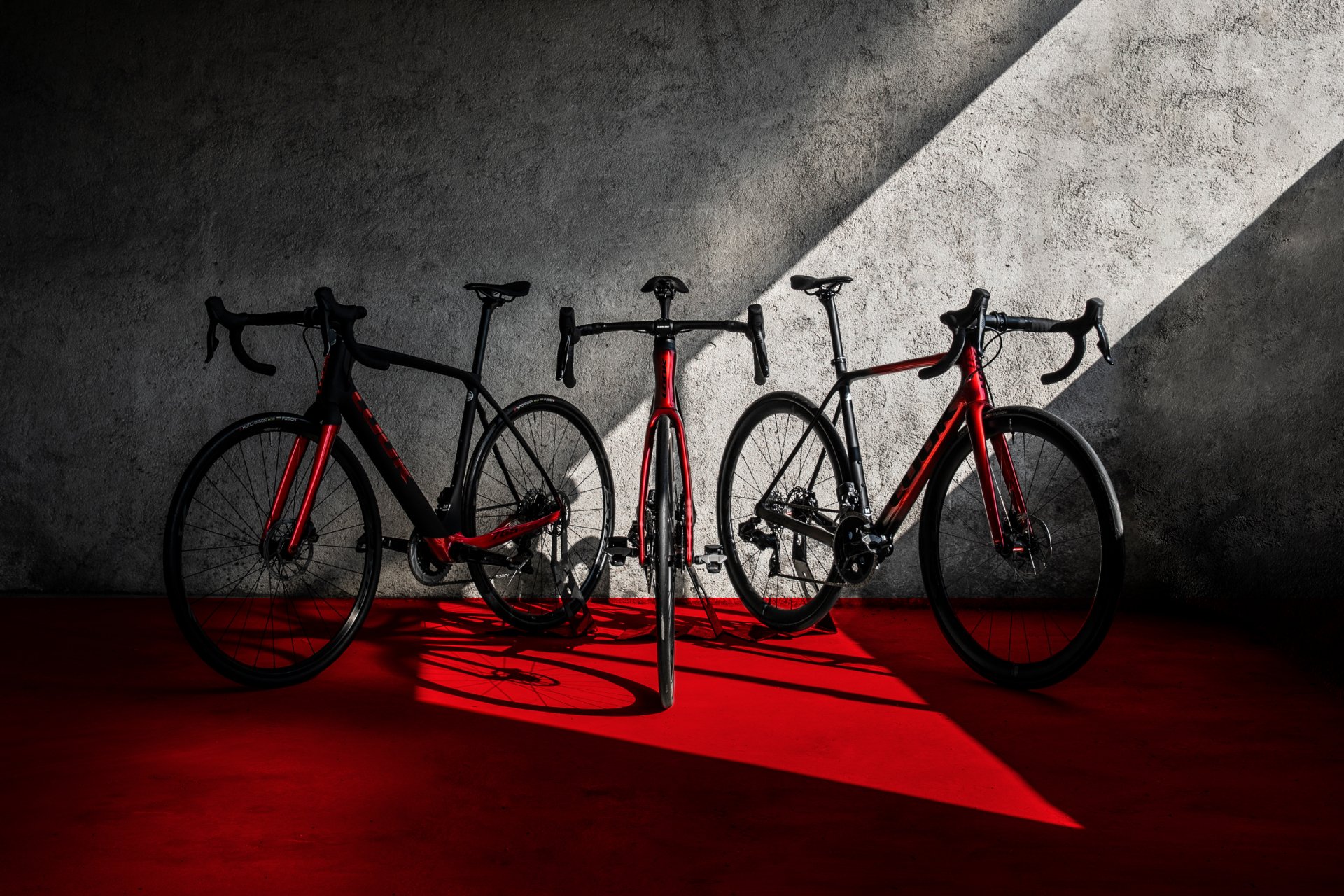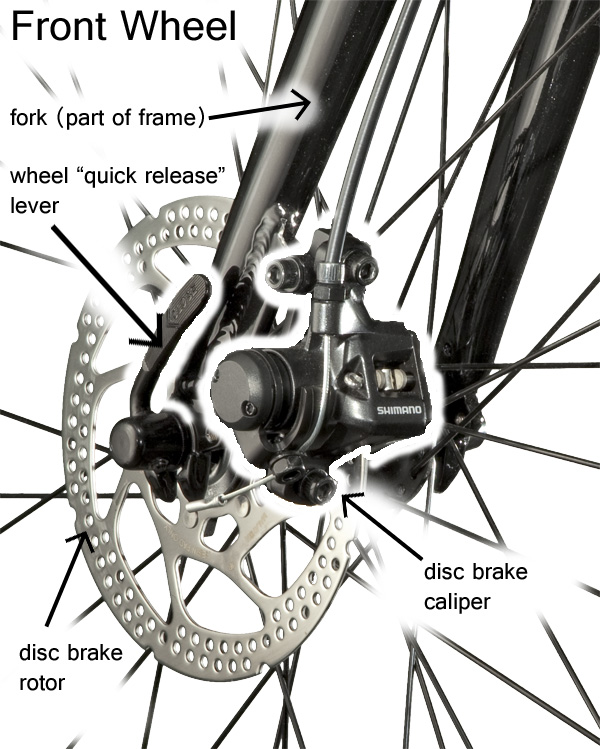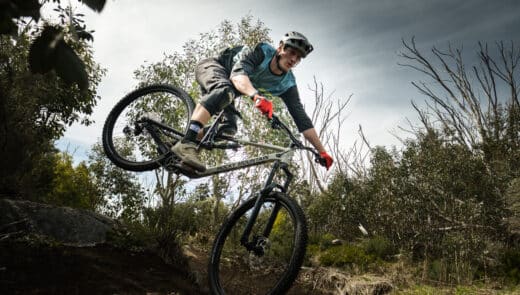What Makes a Great All-Around Mountain Bike?
A good all-around mountain bike is a versatile and reliable companion for any rider, capable of handling a variety of terrain and conditions with ease. When searching for the perfect bike, there are several key characteristics to look for, including durability, ease of handling, and overall performance. A great all-around mountain bike should be able to withstand the rigors of regular use, whether that’s commuting to work or hitting the trails on the weekends.
One of the most important factors in a mountain bike’s performance is its ability to handle different types of terrain. A good all-around mountain bike should be able to navigate everything from smooth singletrack to technical downhill trails with confidence and control. This is where the bike’s geometry and suspension come into play, as a well-designed bike will be able to absorb bumps and maintain traction on a variety of surfaces.
In addition to its ability to handle different terrain, a great all-around mountain bike should also be easy to handle and maneuver. This is especially important for riders who are new to mountain biking, as a bike that is difficult to control can be intimidating and even dangerous. Look for a bike with a comfortable riding position and responsive handling, as these features will make it easier to navigate tight trails and technical sections.
Finally, a good all-around mountain bike should be durable and reliable, with a strong frame and high-quality components that can withstand the rigors of regular use. This is especially important for riders who plan to use their bike for commuting or other forms of transportation, as a bike that is prone to breakdowns can be frustrating and inconvenient.
By considering these factors, riders can find a great all-around mountain bike that meets their needs and provides a fun and rewarding riding experience. Whether you’re a seasoned pro or just starting out, a good all-around mountain bike is an essential tool for any rider looking to explore the world of mountain biking.
How to Choose the Right Bike for Your Riding Style
When it comes to selecting a mountain bike, there are several factors to consider to ensure you find the right bike for your riding style. One of the most important considerations is the type of terrain you’ll be riding on. If you’ll be riding on smooth singletrack, a hardtail bike with a lightweight frame and responsive handling may be the best choice. On the other hand, if you’ll be tackling technical downhill trails, a full-suspension bike with a sturdy frame and reliable brakes may be more suitable.
Another important consideration is the distance you’ll be riding. If you’ll be riding long distances, a bike with a comfortable riding position and efficient gearing may be the best choice. Look for a bike with a relaxed geometry and a wide range of gears to help you tackle long climbs and descents.
In addition to terrain and distance, personal preferences also play a significant role in choosing the right bike. If you’re a beginner, you may want to consider a bike with a more upright riding position and a wider tire for added stability. On the other hand, if you’re an experienced rider, you may prefer a bike with a more aggressive geometry and a narrower tire for improved responsiveness.
Some popular bike models that are well-suited for a variety of riding styles include the Trek Fuel EX and the Specialized Stumpjumper. These bikes offer a great balance of performance, comfort, and versatility, making them ideal for riders who want a good all-around mountain bike. The Trek Fuel EX features a lightweight aluminum frame, a responsive handling, and a wide range of gears, making it perfect for riders who want a bike that can handle everything from smooth singletrack to technical downhill trails.
The Specialized Stumpjumper, on the other hand, features a sturdy carbon fiber frame, a reliable suspension system, and a comfortable riding position, making it ideal for riders who want a bike that can tackle long distances and technical terrain with ease. Both of these bikes are great examples of how a good all-around mountain bike can provide a fun and rewarding riding experience for riders of all skill levels.
Understanding Bike Geometry and Its Impact on Performance
Bike geometry plays a crucial role in determining a mountain bike’s handling, stability, and overall performance. The geometry of a bike refers to the relationship between the various components, including the frame, fork, wheels, and pedals. Understanding bike geometry is essential for riders who want to optimize their bike’s performance and find the perfect fit.
One of the most critical aspects of bike geometry is the wheelbase. The wheelbase is the distance between the front and rear wheels, and it affects the bike’s stability and handling. A longer wheelbase provides greater stability, but can make the bike more difficult to maneuver. A shorter wheelbase, on the other hand, provides greater agility, but can compromise stability.
Another important aspect of bike geometry is the head angle. The head angle is the angle between the front fork and the ground, and it affects the bike’s handling and responsiveness. A slacker head angle provides greater stability, but can make the bike more difficult to steer. A steeper head angle, on the other hand, provides greater responsiveness, but can compromise stability.
The seat tube angle is also a critical aspect of bike geometry. The seat tube angle is the angle between the seat tube and the ground, and it affects the bike’s comfort and efficiency. A more upright seat tube angle provides greater comfort, but can compromise efficiency. A more aggressive seat tube angle, on the other hand, provides greater efficiency, but can compromise comfort.
When it comes to finding a good all-around mountain bike, understanding bike geometry is essential. A bike with a well-designed geometry will provide a comfortable and efficient ride, while also delivering responsive handling and stability. By considering factors such as wheelbase, head angle, and seat tube angle, riders can find a bike that meets their needs and provides a fun and rewarding riding experience.
For example, the Trek Fuel EX features a well-designed geometry that provides a comfortable and efficient ride. The bike’s wheelbase is optimized for stability, while the head angle is designed for responsive handling. The seat tube angle is also optimized for comfort and efficiency, making the Fuel EX a great choice for riders who want a good all-around mountain bike.
The Importance of Suspension and Brake Systems
A good all-around mountain bike requires a harmonious balance of components, and suspension and brake systems are two of the most critical factors to consider. These systems work in tandem to provide a smooth, controlled ride, and their quality can make or break a bike’s overall performance.
Suspension systems, in particular, play a crucial role in absorbing shock, reducing fatigue, and maintaining traction. There are two primary types of suspension systems: hardtail and full-suspension. Hardtail bikes feature a front suspension fork, while full-suspension bikes have both front and rear suspension. Full-suspension bikes are generally more comfortable and capable, but they can be heavier and more expensive. When choosing a suspension system, consider the type of terrain you’ll be riding on and your personal preferences. For example, if you’ll be riding on smooth trails, a hardtail bike may be sufficient, but if you’ll be tackling rough, technical terrain, a full-suspension bike is likely a better choice.
Brake systems are equally important, as they provide the stopping power and control needed to navigate challenging terrain. There are two primary types of brake systems: disc and hydraulic. Disc brakes are more common and feature a rotor attached to the wheel hub, while hydraulic brakes use fluid pressure to activate the brake calipers. Hydraulic brakes are generally more powerful and reliable, but they can be more expensive and require more maintenance. When choosing a brake system, consider the type of riding you’ll be doing and the level of stopping power you need. For example, if you’ll be riding in wet or muddy conditions, hydraulic brakes may be a better choice.
In addition to the type of suspension and brake system, it’s also important to consider the quality of the components. Look for bikes with high-quality suspension forks and shock absorbers, as well as reliable brake calipers and rotors. Reputable manufacturers like Fox, RockShox, and Shimano offer high-performance suspension and brake components that can elevate a bike’s overall performance.
Ultimately, a good all-around mountain bike requires a careful balance of suspension and brake systems. By considering the type of terrain you’ll be riding on, your personal preferences, and the quality of the components, you can find a bike that provides a smooth, controlled ride and inspires confidence on the trails.
Wheel Size and Tire Choice: What’s the Best Combination?
When it comes to choosing a good all-around mountain bike, wheel size and tire choice are crucial factors to consider. The right combination can make a significant difference in a bike’s performance, handling, and overall ride quality. In this section, we’ll explore the pros and cons of different wheel sizes and tire choices, and provide guidance on how to select the best combination for your needs.
Wheel size is a critical factor in determining a bike’s performance. The two most common wheel sizes for mountain bikes are 27.5″ and 29″. 27.5″ wheels are often preferred for their agility, playfulness, and ability to navigate tight trails. They are also a good choice for riders who prioritize maneuverability and quick acceleration. On the other hand, 29″ wheels offer improved rolling efficiency, stability, and speed. They are ideal for riders who prioritize speed, comfort, and traction on smoother trails.
Tire choice is another critical factor to consider. Tire width, tread pattern, and compound all play a significant role in determining a bike’s performance. Wider tires (2.3-2.5″) offer improved traction, comfort, and control, but may be heavier and less efficient. Narrower tires (2.0-2.2″) are lighter, faster, and more efficient, but may compromise on traction and comfort. Tread pattern is also important, with different patterns suited for different terrain and riding styles. For example, a tire with a more aggressive tread pattern may be better suited for technical, rocky trails, while a tire with a smoother tread pattern may be better suited for smoother, flowy trails.
When choosing a wheel size and tire combination, consider the type of terrain you’ll be riding on, your personal preferences, and your riding style. If you’ll be riding on technical, rocky trails, a 27.5″ wheel with a wider, more aggressive tire may be the best choice. If you’ll be riding on smoother, flowy trails, a 29″ wheel with a narrower, smoother tire may be the better option.
Some popular wheel and tire combinations for good all-around mountain bikes include:
- 27.5″ wheels with 2.3-2.5″ wide tires (e.g., Maxxis Minion DHF, Continental Trail King)
- 29″ wheels with 2.0-2.2″ wide tires (e.g., Schwalbe Racing Ralph, Specialized Ground Control)
Ultimately, the best wheel size and tire combination will depend on your specific needs and preferences. By considering the factors mentioned above and experimenting with different combinations, you can find the perfect setup for your good all-around mountain bike.
Component Quality and Durability: What to Look for
When it comes to choosing a good all-around mountain bike, component quality and durability are crucial factors to consider. A bike’s components can make or break its performance, and investing in high-quality parts can ensure a smooth, reliable ride. In this section, we’ll discuss the importance of component quality and durability, and provide guidance on what to look for when selecting a mountain bike.
Frame material is a critical factor in determining a bike’s durability and performance. Look for bikes with frames made from high-quality materials such as carbon fiber, aluminum, or steel. Carbon fiber frames are lightweight and responsive, while aluminum frames are durable and affordable. Steel frames are strong and reliable, but may be heavier than other materials.
Drivetrain components, including the crankset, chainrings, and cassette, are also essential to a bike’s performance. Look for bikes with high-quality drivetrain components from reputable manufacturers such as Shimano or SRAM. A good drivetrain should provide smooth, reliable shifting and be able to withstand the rigors of off-road riding.
Wheelsets are another critical component to consider. Look for bikes with high-quality wheelsets that feature durable rims, reliable hubs, and strong spokes. A good wheelset should be able to withstand the demands of off-road riding and provide a smooth, responsive ride.
Brake systems are also essential to a bike’s performance and safety. Look for bikes with high-quality brake systems that feature reliable calipers, strong rotors, and durable brake pads. A good brake system should provide smooth, consistent braking and be able to withstand the demands of off-road riding.
Other components to consider when selecting a mountain bike include the saddle, handlebars, and pedals. Look for bikes with high-quality components that provide comfort, durability, and performance.
Some popular component manufacturers for good all-around mountain bikes include:
- Shimano: Known for their high-quality drivetrain and brake components.
- SRAM: Offers a range of high-quality drivetrain and brake components.
- RockShox: Provides high-quality suspension components for mountain bikes.
- FOX: Offers high-quality suspension components for mountain bikes.
By investing in a mountain bike with high-quality components, you can ensure a smooth, reliable ride and enjoy the best possible performance on the trails.
Real-World Testing: How to Take Your Bike for a Spin
Once you’ve narrowed down your options and found a few good all-around mountain bikes that fit your needs and budget, it’s time to take them for a spin. Real-world testing is an essential step in the bike-buying process, as it allows you to get a feel for the bike’s performance, handling, and overall ride quality.
When test riding a mountain bike, there are several things to look for. First, pay attention to the bike’s handling and responsiveness. How does it corner? How does it brake? How does it accelerate? A good all-around mountain bike should be able to handle a variety of terrain and riding styles with ease.
Next, consider the bike’s comfort and ergonomics. How does the saddle feel? Are the handlebars at a comfortable height? Are the pedals in the right position? A good all-around mountain bike should be comfortable to ride for extended periods of time.
Finally, pay attention to the bike’s performance on different types of terrain. How does it handle steep climbs? How does it handle technical descents? How does it handle rough, rocky terrain? A good all-around mountain bike should be able to handle a variety of terrain with ease.
Some popular bike test ride locations or events include:
- Local bike shops: Many local bike shops offer test rides on a variety of mountain bikes.
- Bike festivals: Bike festivals are a great place to test ride a variety of mountain bikes in a fun and festive atmosphere.
- Trail centers: Trail centers are a great place to test ride a mountain bike on a variety of terrain.
When test riding a mountain bike, be sure to wear proper safety gear, including a helmet and gloves. It’s also a good idea to bring a friend or family member along to provide feedback and support.
By taking a good all-around mountain bike for a spin, you can get a feel for its performance, handling, and overall ride quality. This will help you make an informed decision and find the perfect bike for your needs and preferences.
Conclusion: Finding Your Dream All-Around Mountain Bike
Choosing the perfect all-around mountain bike can be a daunting task, but by considering the key factors discussed in this article, you can make an informed decision and find the bike that’s right for you. Remember to consider your riding style, terrain, and personal preferences when selecting a bike, and don’t be afraid to test ride a few different models before making a decision.
A good all-around mountain bike should be versatile, durable, and easy to handle, with a comfortable riding position and responsive handling. It should also have a reliable suspension and brake system, and be equipped with high-quality components that can withstand the demands of off-road riding.
By following the tips and advice outlined in this article, you can find a mountain bike that meets your needs and provides you with years of riding enjoyment. Whether you’re a seasoned pro or just starting out, a good all-around mountain bike can help you take your riding to the next level and experience the thrill of exploring new trails and terrain.
Some final tips to keep in mind when searching for your dream all-around mountain bike include:
- Do your research: Read reviews, talk to other riders, and test ride different bikes to find the one that’s right for you.
- Consider your budget: Mountain bikes can range in price from a few hundred to several thousand dollars, so set a budget and stick to it.
- Don’t compromise on quality: While it may be tempting to save money by sacrificing quality, remember that a good all-around mountain bike is an investment in your riding enjoyment and safety.
By following these tips and considering the key factors discussed in this article, you can find a mountain bike that meets your needs and provides you with years of riding enjoyment. Happy trails!









